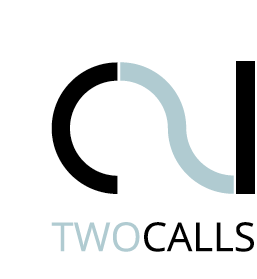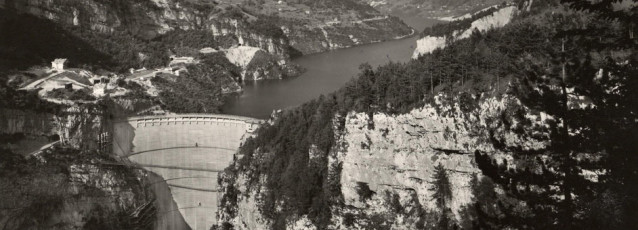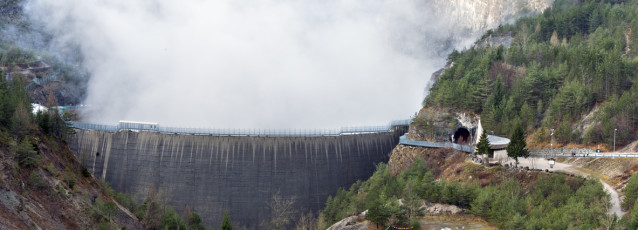
Tuesday, June 15th 2021, 2 – 4 PM, webinar panel:
two calls for vajont: fase _restart.
Vajont: re-action, design, resilience
The International Artistic Contest Two Calls for Vajont was launched by Dolomiti Contemporanee (DC) in 2014.
In 2020, thanks to a collaboration with ETRAR.T.E., and with the support of the Friuli Venezia Giulia Region, the Contest was reactivated.
In March 2021, Two Calls received a Special Mention from MiBACT in the contest of the European Council Landscape Award.
And thus, on Tuesday June 15th, DC and ETRAR.T.E. present the panel: Vajont: re-action, design, resilience.
On May 21st 2021, the 17. Architecture Biennale of Venice was inaugurated.
Dolomiti Contemporanee is part of the Italy Pavilion; Resilient Communities, curated by Alessandro Melis.
The DC section in the Arsenale is titled Dolomiti Care.
Inside it are addressed, among other themes and sites, the Vajont — with the projective vision we very much posseess — and the Two Calls Contest.
The themes of attention to sustainable issues, of responsible, social and project-oriented intelligence, of the necessity to create an organic approach of cultural ecology to the great critical themes of the contemporary, are put forward by DC with an almost surgical focus, inside the scope of the reflection on the state and destiny of the Landscape and of the Heritage, in particular when it comes to the UNESCO Dolomites‘ region.
Melis will, then, in this “blessed” webinar, discuss the “chrisms” of his research and Venetian exhibitions.
During the long preparation work for Resilient Communities we were able to work with the curatorial team and, in particular, with the group from the Portsmouth University of Architecture, where Melis is a Professor of Architecture and Innovation, and Antonino Di Raimo, a Reader in Architecture.
Thus, it was decided that we would put to work some of the students from the Studios of Portsmouth (Thesis Preparation, Thesis Design, Integration Of Transdisciplinary Experiences) on some of the sites which DC places at the centre of its regenerative strategy, such as the Corte di Cadore Village, the Italia Ski Jump in Zuel and, indeed, the Vajont.
The architectural projects developed by Portsmouth in the Vajont between 2020 and 2021 were about twenty: here they are presented by Antonino di Raimo.
We believe this international collaboration to definitely be a meaningful one.
After Two Call‘s young artists, young architects have landed on planet Vajont, they have thoroughly studied it, and have populated it with invigorating images and projects.
None of us has, indeed, ever had the intention of dedicating themselves, in this complex place, to commemoration.
Ideas and shapes must always keep coming. Unless one deals in the mortuary business.
__
Panelists:
introduction:
Elena Tammaro (vice-president of the ETRAR.T.E.)
Committee of Public Safety:
Gianluca D’Incà Levis ideator of DC and Twocalls, director of the Spazio di Casso at the Vajont
Alessandro Melis (Professor of Architecture and Innovation, School of Architecture, University of Portsmouth)
Antonino Di Raimo (Reader in Architecture, School of Architecture, University of Portsmouth)
The panel will take place on Zoom, those interested in taking part should write an e-mail to info@dolomiticontemporanee.net or etrarte@associazionetrarte.it.
The event will be recorded and then made available on ETRAR.T.E.‘s YouTube Channel.
This initiative is made possible thanks to the financial support of the Friuli Venezia Giulia Region granted under the Regional law of July the 8th, 2019, n°. 10 (Day of remembrance for the Vajont tragedy and of the Vajont Remembrance recognition). Indication of interest for the year 2020.
–
Martedì 15 giugno 2021, ore 14:00 – 16:00, panel webinar:
two calls for vajont: fase _restart.
Vajont: re-azione, progetto, resilienza
Il Concorso Artistico Internazionale Two Calls for Vajontè stato lanciato da Dolomiti Contemporanee (DC) nel 2014.
Nel 2020, grazie ad una collaborazione con ETRAR.T.E., e con il sostegno della Regione Friuli Venezia Giulia, il Concorso è stato riattivato.
A marzo 2021, Two Calls ha ricevuto Menzione da parte del MiBACT all’interno del Premio del Paesaggio del Consiglio d’Europa.
E dunque, martedì 15 giugno DC ed Etrarte propongono il panel: Vajont: reazione, progetto, resilienza.
Il 21 maggio 2021 si è inaugurata la 17. Biennale di Architettura di Venezia.
Dolomiti Contemporanee è parte del Padiglione Italia Comunità Resilienti, curato da Alessandro Melis.
La sezione DC all’Arsenale è intitolata Dolomiti Care.
Al suo interno, tra gli altri temi e siti, sono trattati anche il Vajont, nella visione proiettiva che ne abbiamo anzichenò, ed il Concorso Two Calls.
I temi dell’attenzione sostenibile, di un’intelligenza responsabile, sociale e progettuale, della necessità di un approccio organico d’ecologia culturale ai grandi temi critici della contemporaneità, sono portati da DC, con uno zoom chirurgico, all’interno della riflessione sullo stato e sul destino del Paesaggio e del Patrimonio, in particolare nella regione delle Dolomiti Unesco.
Nel benedetto webinar, Melis ci parlerà dunque dei crismi della sua ricerca e dell’esposizione veneziana.
Nel lungo lavoro di preparazione di Comunità Resilienti, abbiamo potuto lavorare con il team curatoriale, e in particolare con il gruppo dell’Università di Architettura di Portsmouth, dove Melis è Professor of Architecture and Innovation, e Antonino Di Raimo, Reader in Architecture.
Così, si è deciso di far lavorare alcuni degli studenti degli Studios di Portsmouth (Thesis Preparation, Thesis Design, Integration Of Transdisciplinary Experiences), su alcuni dei siti che DC pone al centro della propria strategia di rigenerazione, come il Villaggio di Corte di Cadore, il Trampolino Italia di Zuel, e il Vajont appunto.
Sono una ventina i progetti d’architettura organica sviluppati da Portsmouth nell’area del Vajont tra 2020 e 2021: qui essi vengono presentati da Antonino di Raimo.
Riteniamo questa collaborazione internazionale decisamente significativa.
Dopo i giovani artisti con Two Calls, anche i giovani architetti sono atterrati sul pianeta-Vajont, l’hanno studiato a fondo, e l’hanno popolato di immagini e progetti vivificanti.
Nessuno di noi, infatti, ha mai avuto l’intenzione di dedicarsi qui, in questo luogo complesso, alla commemorazione.
Le idee e le forme, sempre devono venire. A meno che non ci si occupi di onoranze funebri.
Partecipanti al panel:
introduzione:
Elena Tammaro (vice-presidente Associazione Etrarte)
Comitato di salute pubblica:
Gianluca D’Incà Levis ideatore di DC e Twocalls, direttore dello Spazio di Casso al Vajont
Alessandro Melis (Professor of Architecture and Innovation, School of Architecture, University of Portsmouth)
Antonino Di Raimo (Reader in Architecture, School of Architecture, University of Portsmouth)
Il panel si svolge sulla piattaforma Zoom, chi è interessato a partecipare può scrivere a info@dolomiticontemporanee.net o etrarte@associazionetrarte.it.
L’evento verrà registrato e successivamente reso disponibile sul canale YouTube di Etrarte.
L’iniziativa si realizza grazie al finanziamento della Regione Friuli Venezia Giulia concesso ai sensi della Legge regionale 8 luglio 2019, n. 10 (Giornata in ricordo della tragedia del Vajont e del riconoscimento Memoria del Vajont). Manifestazione di interesse per l’anno 2020.
12/10/2016
On Satuday, October 15th, on the occasion of the 22nd Amaci Day of the Contemporary, the Nuovo Spazio Di Casso will remain open from 10 AM through 6:30 PM, with an exhibit of the projects which reached the Twocalls final.
21/05/2016
On Thursday, June the 2nd, at 3 PM, inside the Nuovo Spazio di Casso, Two Calls for Vajont, the International Contemporary Art Contest that Dolomiti Contemporanee launched in June 2014, is going to be reintroduced.
A few months after the proclamation of the Contest’s results, with the selection of the winners, the project, thus, begins again.
19/07/2015
The results for the International Artistic Contest Two Calls for Vajont, hereby presented, are the outcome of a crossing of the short lists supplied by the jury members, subsequently examined by the Dolomiti Contemporanee’s Inner Committee.
Several jurors proposed some ideas on the ery structure and objectives of the Contest itself, and on its next phases (Jaar, Vettese, Basso Fossali).
















